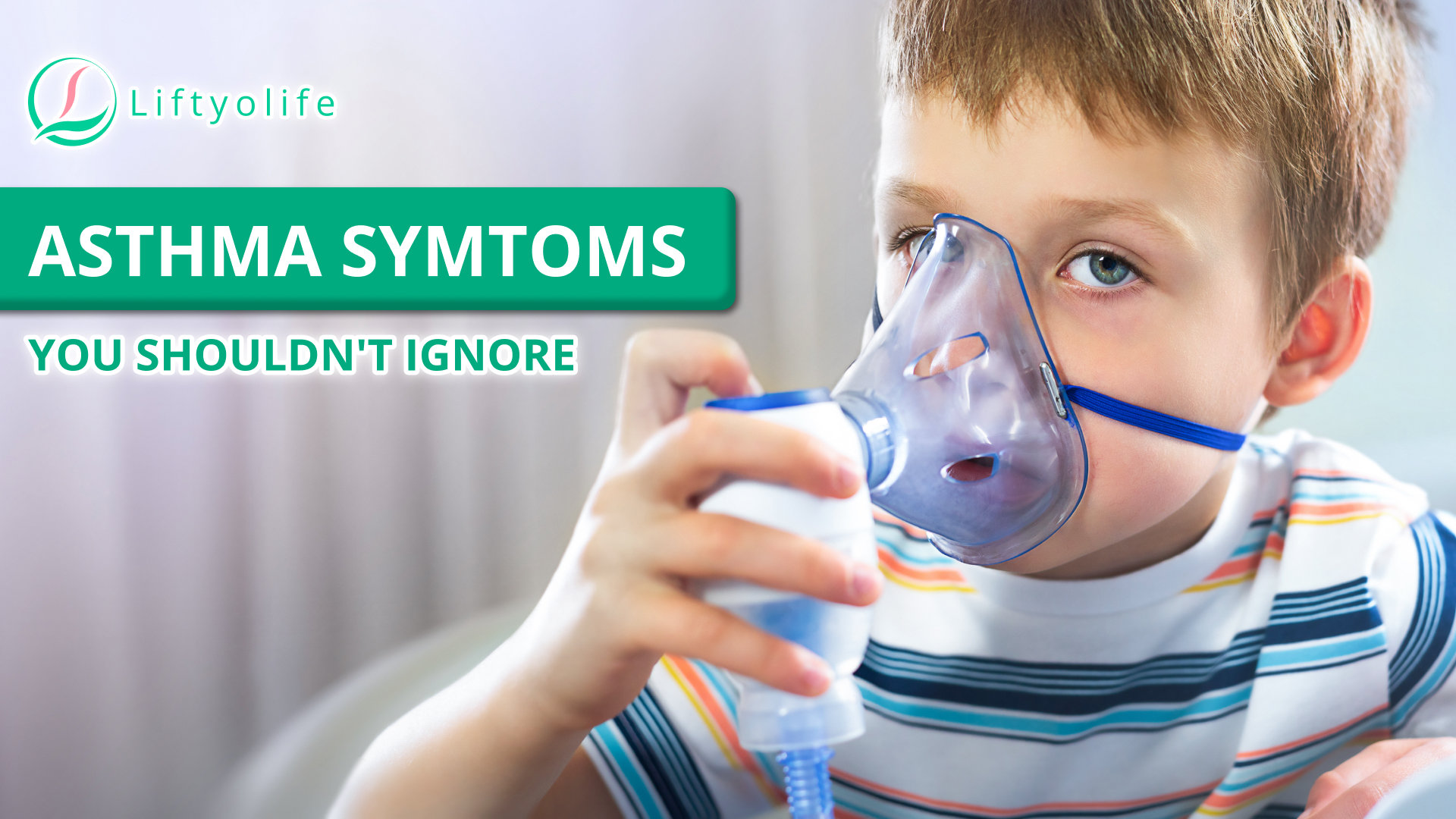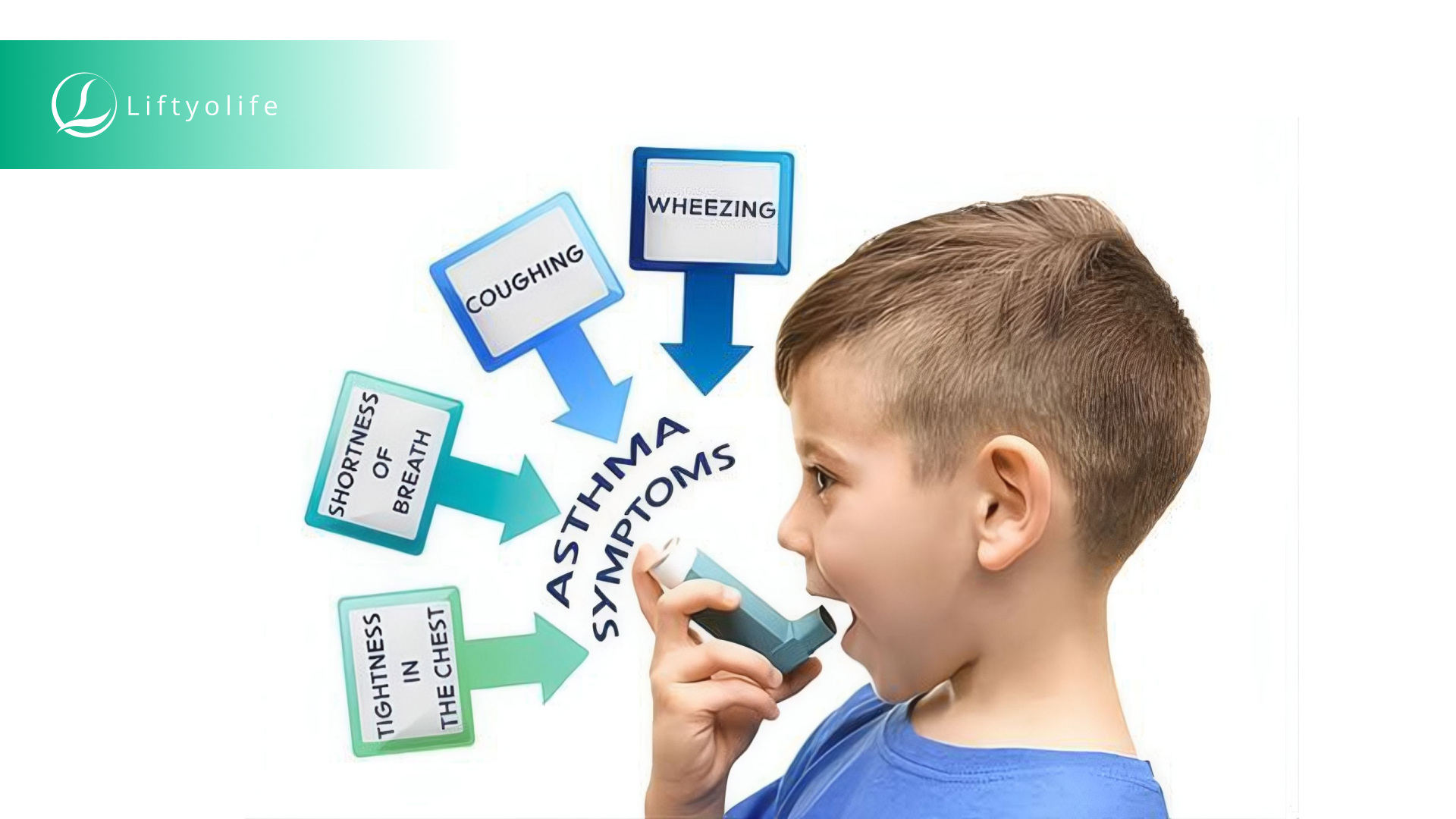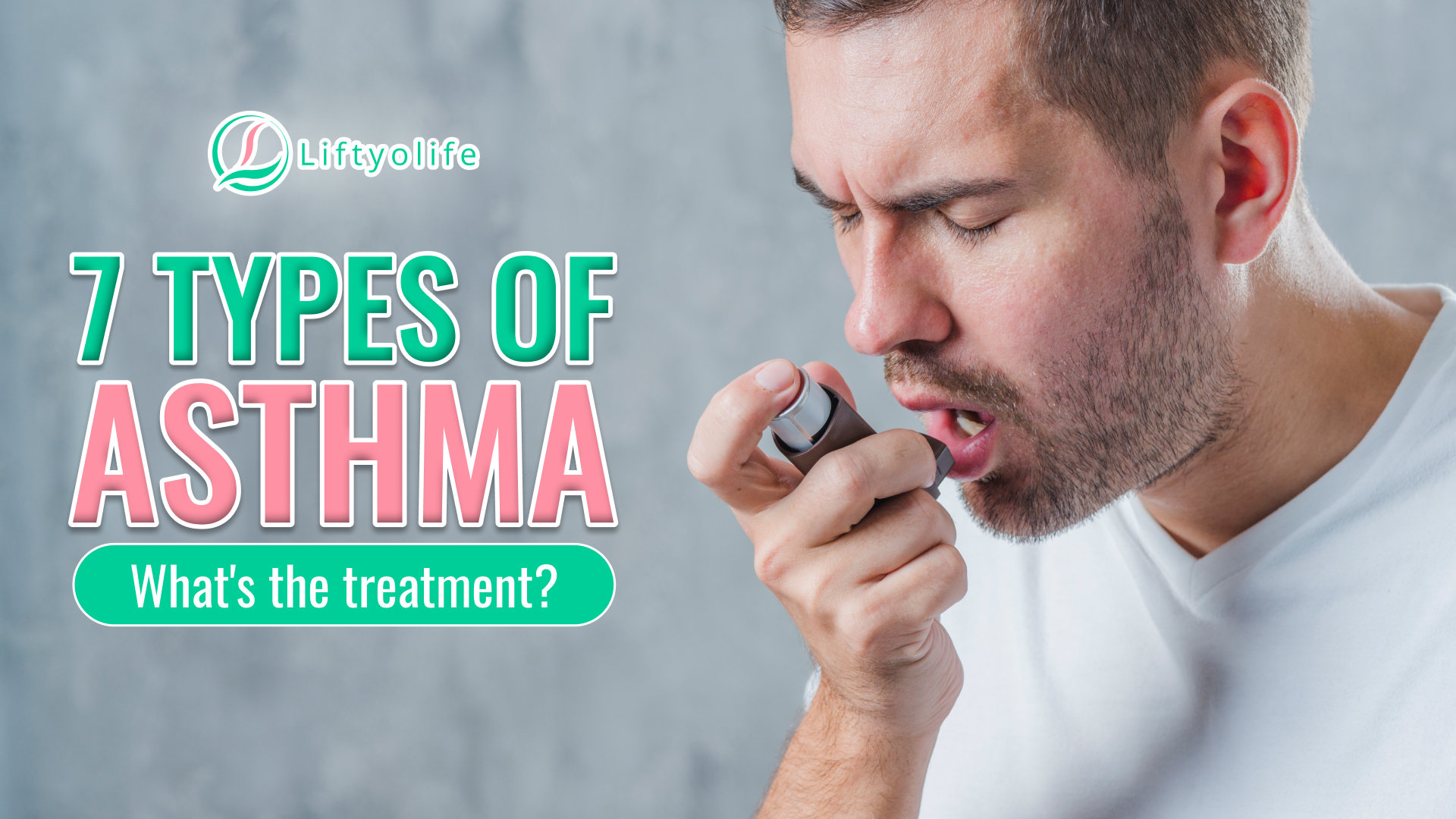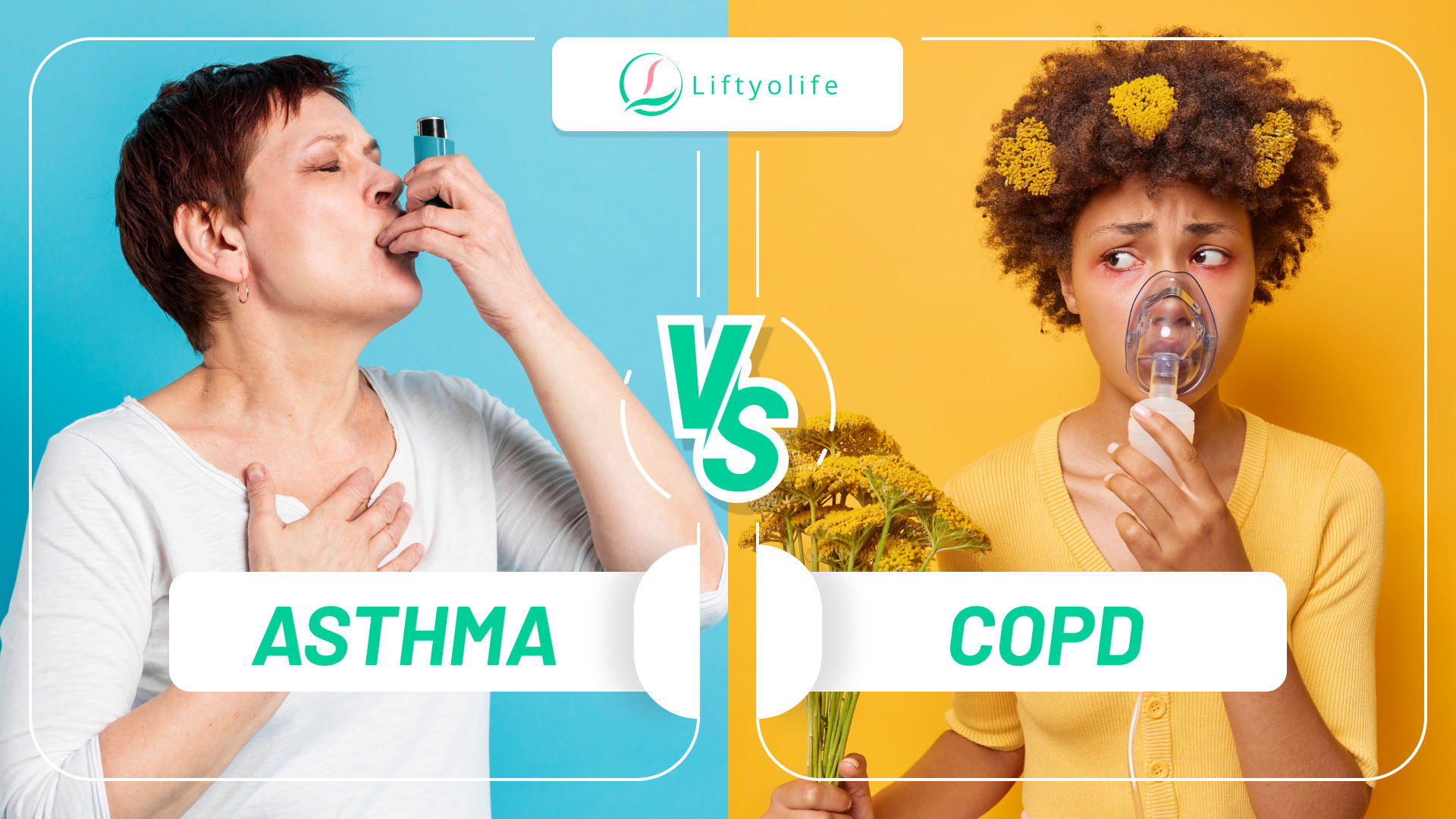What Are Asthma Symptoms? Warning Signs Should Know

What are asthma symptoms? Asthma can be both acute and chronic, so you must find a treatment regimen to live with it, maybe for the rest of your life. Asthma prevalence has risen dramatically in the last 30 years, with population-based studies of school-aged children and young adults providing the most conclusive evidence. This means that asthma is becoming more common in younger people, which increases the risk of danger. There is no room for subjectivity here, so let’s start learning about asthma with Liftyolife (liftyolife.com) right away.
1. What is asthma?
The World Health Organization (WHO) launched an article that defined asthma. Let’s follow and dive into that definition as below:
“Asthma is a long-term condition affecting children and adults. The air passages in the lungs become narrow due to inflammation and tightening of the muscles around the small airways”.
Although you cannot cure asthma completely, its symptoms can be managed. Because asthma frequently changes over time, you must collaborate with your doctor to monitor your warning signs and symptoms and alter your treatment as needed.
2. What causes asthma?
Do you know why one person has asthma while another does not? This is based on many factors associated with the disease. Moreover, triggers differ from people but can include viral infections (colds), dust, smoke, fumes, weather changes, etc., including those typical listed below by the World Health Organization:
- Other family members with asthma are more likely to have asthma, especially a close relative such as a parent or sibling. Moreover, specific asthma-related gene polymorphisms are passed down to the mother rather than the father.
- Asthma prevalence rises with urbanization, most likely due to a combination of lifestyle factors.
- People suffering from other allergic conditions, such as eczema and rhinitis, are more likely to develop asthma (hay fever).
- Early life events impact the developing lungs and can increase the risk of asthma. Low birth weight, prematurity, tobacco smoke, and other sources of air pollution, as well as viral respiratory infections, are examples of these.
- Overweight or obese children and adults are at a higher risk of developing asthma.
- Exposure to a variety of environmental allergens and irritants, such as indoor and outdoor air pollution, house dust mites, molds, and occupational exposure to chemicals, fumes, or dust, is also thought to increase the risk of asthma.
Furthermore, a 2015 study by Mengfan Tang et al. discovered that the independent known to be important factors affecting asthma susceptibility and they could be ordered as follows:
- Personal factors such as physical exertion and stress are strong predictors of asthma risk,
- The next factor is exposure to PM2.5 (fine particulate matter (PM2.5), an air pollutant that is a health concern when high air levels), and environmental smoke.
- The personal characteristics obtained here are beneficial because they do not necessitate extensive diary keeping by the subjects. Most of them, such as physical exercise time, work hours, home time, and breath rate, are easily obtained from wearable sensors and smartphones.
- One-time questions can reveal other personal characteristics such as smoking habits, fuel type, and occupation.

What causes asthma?
3. What are the symptoms of asthma?
Asthma symptoms do not last the entire time you have the disease; acute asthma attacks are short-lived but extremely dangerous and can be life-threatening. These asthma exacerbations can be mild, moderate, severe, or life-threatening. Asthma symptoms commonly include:
- Shortness of breath and tightness in the chest.
- Breathing difficulty.
- Coughing, especially early in the morning or at night.
- Wheezing, which produces a whistling sound when you exhale.
These symptoms come, go and are usually worse at night or during exercise. Other common “triggers” can aggravate asthma symptoms. You can have them every day or only occasionally. When you have an asthma attack, your symptoms worsen dramatically. An attack can occur gradually or suddenly even be life-threatening at times. They are more prevalent in people with severe asthma.

What are the symptoms of asthma?
4. How is asthma diagnosed?
Your doctor may use many tools to diagnose asthma, including:
- Medical history
- Physical examination
- Lung function tests: spirometry is used to determine how well your lungs work.
- Peak expiratory flow (PEF) tests are used to determine how quickly you can blow air out while exerting maximum effort.
- Tests how your airways react to various stimuli. During this test, you will inhale different concentrations of allergens or medications that may cause the muscles in your airways to tighten. Spirometry is performed before and after the test.
- Fractional exhaled nitric oxide (FeNO) tests are used to determine the amount of nitric oxide in your breath when you exhale. High nitric oxide levels may indicate that your lungs are inflamed.
- If you have a history of allergies, you may be subjected to allergy skin or blood tests. These tests determine which allergens cause your immune system to react.
5. What happens during an asthma episode?
The airways to the lungs are entirely open during normal breathing. This allows air to enter and exit the lungs freely. Asthma alters the airways in the following ways:
- The airway’s branches lead to the lungs becoming overly reactive and more sensitive to all types of asthma triggers.
- The airway linings swell and become inflamed.
- Mucus obstructs the airways.
- Muscles constrict around the airways (bronchospasm)
- The lungs have tough moving air in and out of the body (airflow obstruction: moving air out can be especially difficult)
- These modifications narrow the airways.
These changes will gradually devastate your airways and lungs; thereby, breathing becomes difficult and stressful, similar to breathing through a cotton-stuffed straw.
6. What are the treatments for asthma?
Asthma is addressed in the WHO Global Action Plan for NCDs (Noncommunicable diseases) Prevention and Control and the United Nations 2030 Agenda for Sustainable Development.
The WHO Package of Essential NCD Interventions (PEN) was created to aid in the management of NCDs in primary care of low-resource settings. PEN includes protocols for assessing, diagnosing, and managing chronic respiratory diseases (asthma and chronic obstructive pulmonary disease) as well as modules on healthy lifestyle counseling, such as tobacco cessation and self-care.
Moreover, if you have asthma, you will collaborate with your doctor to develop a treatment plan. The plan will include strategies for managing asthma symptoms and preventing asthma attacks. It will consist of the following:
- Techniques for avoiding triggers: If tobacco smoke, for example, is a trigger for you, you should not smoke or allow someone to smoke near you.
- Short-term relief medications (quick-relief medications): They aid in preventing symptoms and the relief of symptoms during an asthma attack. They come with an inhaler that you can keep with you at all times. Other medications that work quickly to open your airways may also be included.
- Medication management: You take them daily to help prevent asthma symptoms. They can reduce airway inflammation and avoid airway narrowing.
If you have a severe attack and the over-the-counter pain relievers do not work, you will require emergency care.
Closing the knowledge gap on asthma symptoms and treatment can help you reduce the risk of danger for your loved ones. That is necessary. Liftyolife (liftyolife.com) is here to show you how to live a healthier life and better control your disease.
==> Read More:







